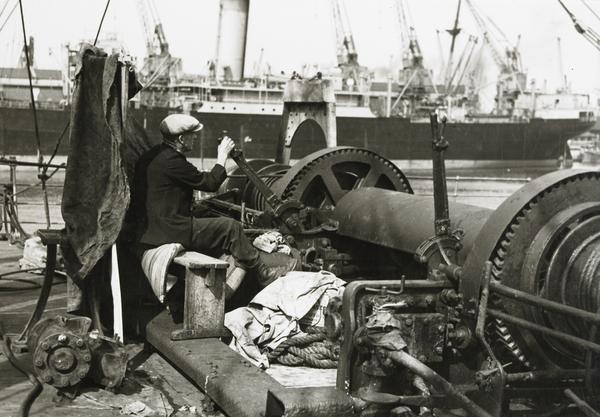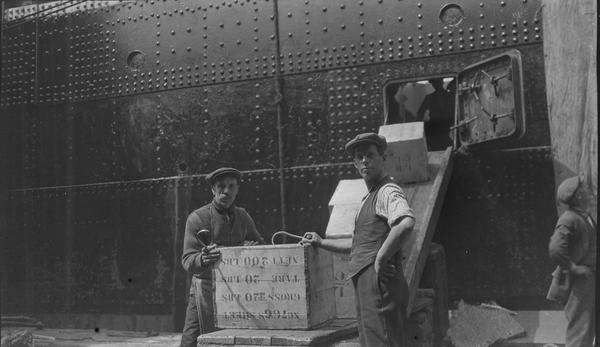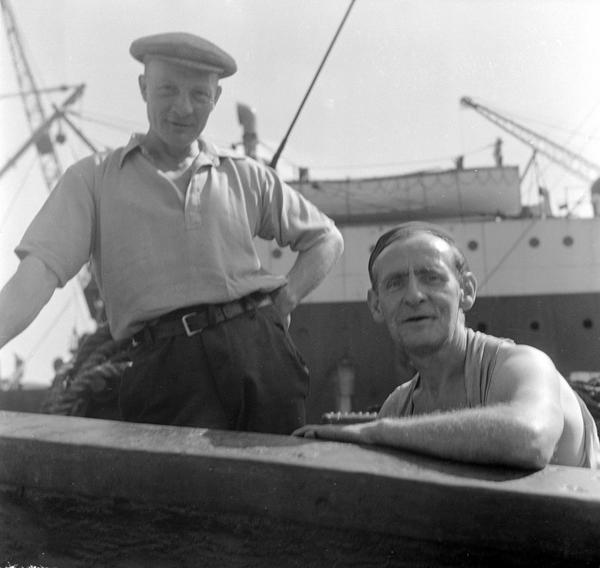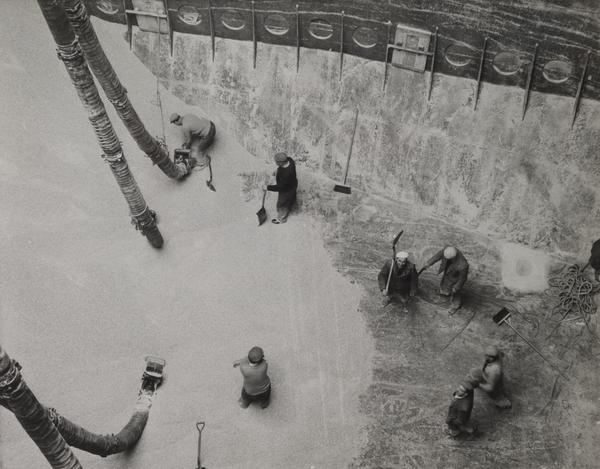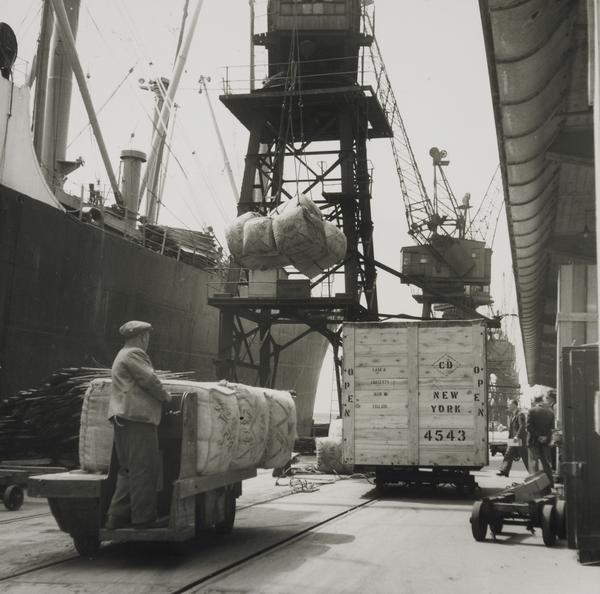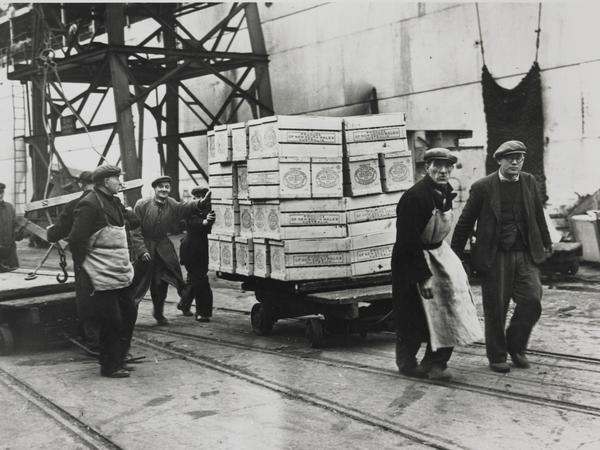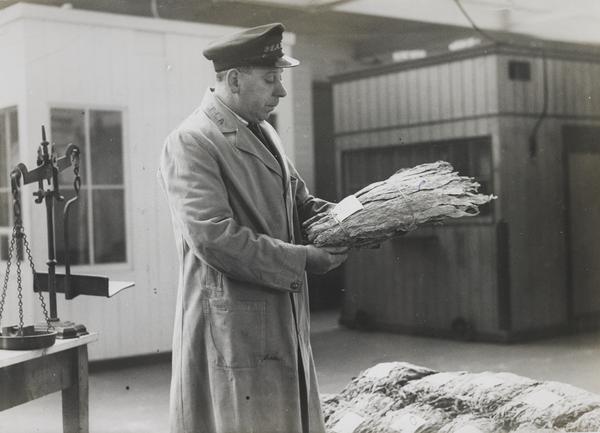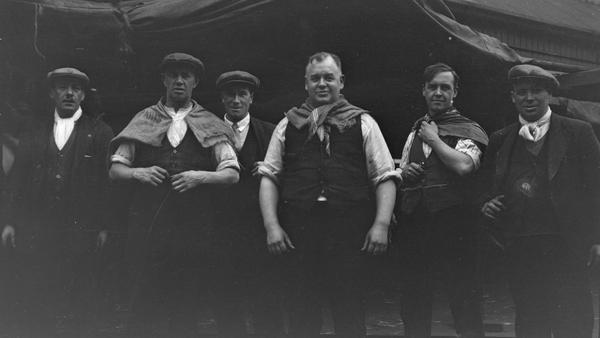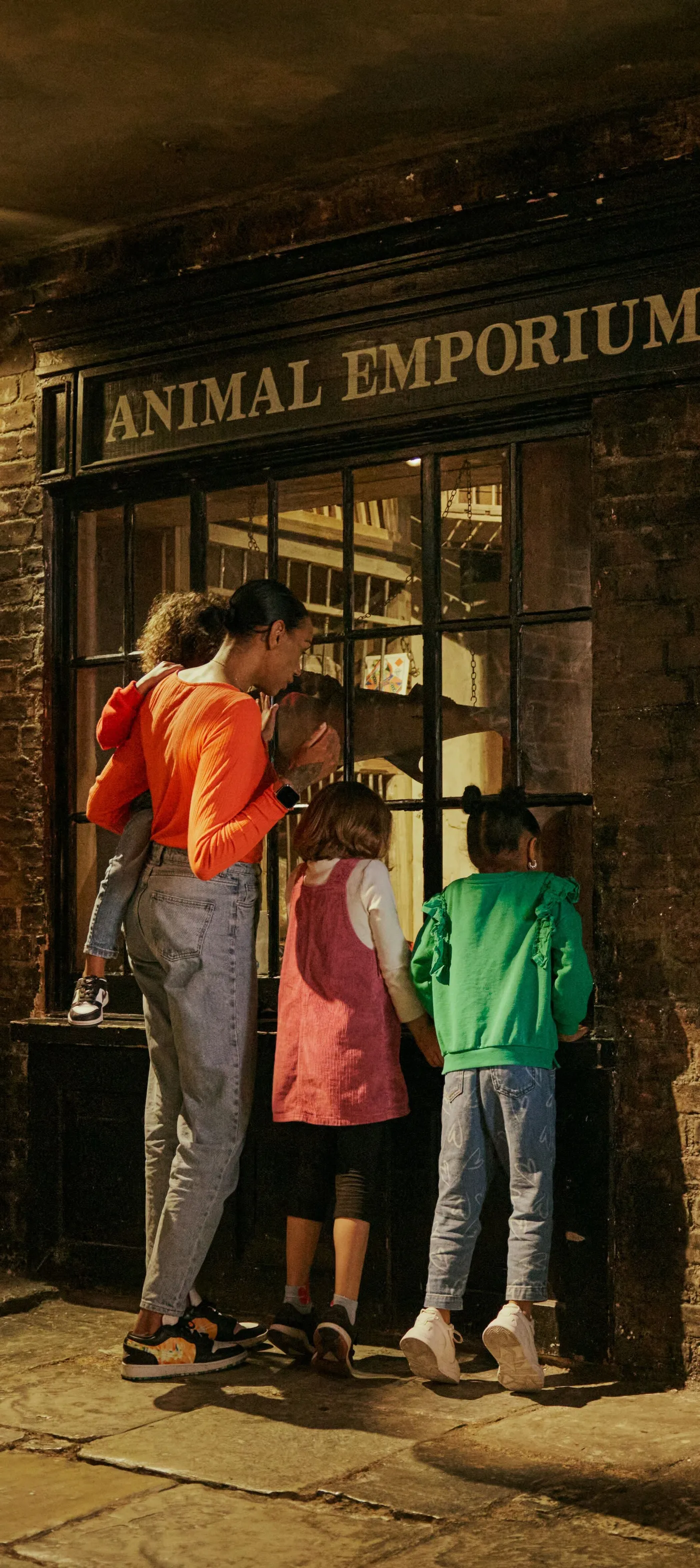The jobs that made London’s docks run
Until the 1970s, London was a globally connected port, and its docks rumbled with the activity of tens of thousands of workers. Pictures from our collection show the stevedores, lightermen, riggers, warehousemen, winchmen and tallymen, all keeping the docks running with a mixture of back-breaking labour and impressive skill.
Docklands
1802–1981

From ship to shore
Two workers stand inside the hold of a ship some time between 1965 and 1975. Although often lumped together as ‘dockers’, in reality the people working in the docks did a wide variety of specific jobs. The stevedores were considered among the more skilled workers. They worked aboard ships, rather than on the dock, and mainly loaded goods carefully for export.
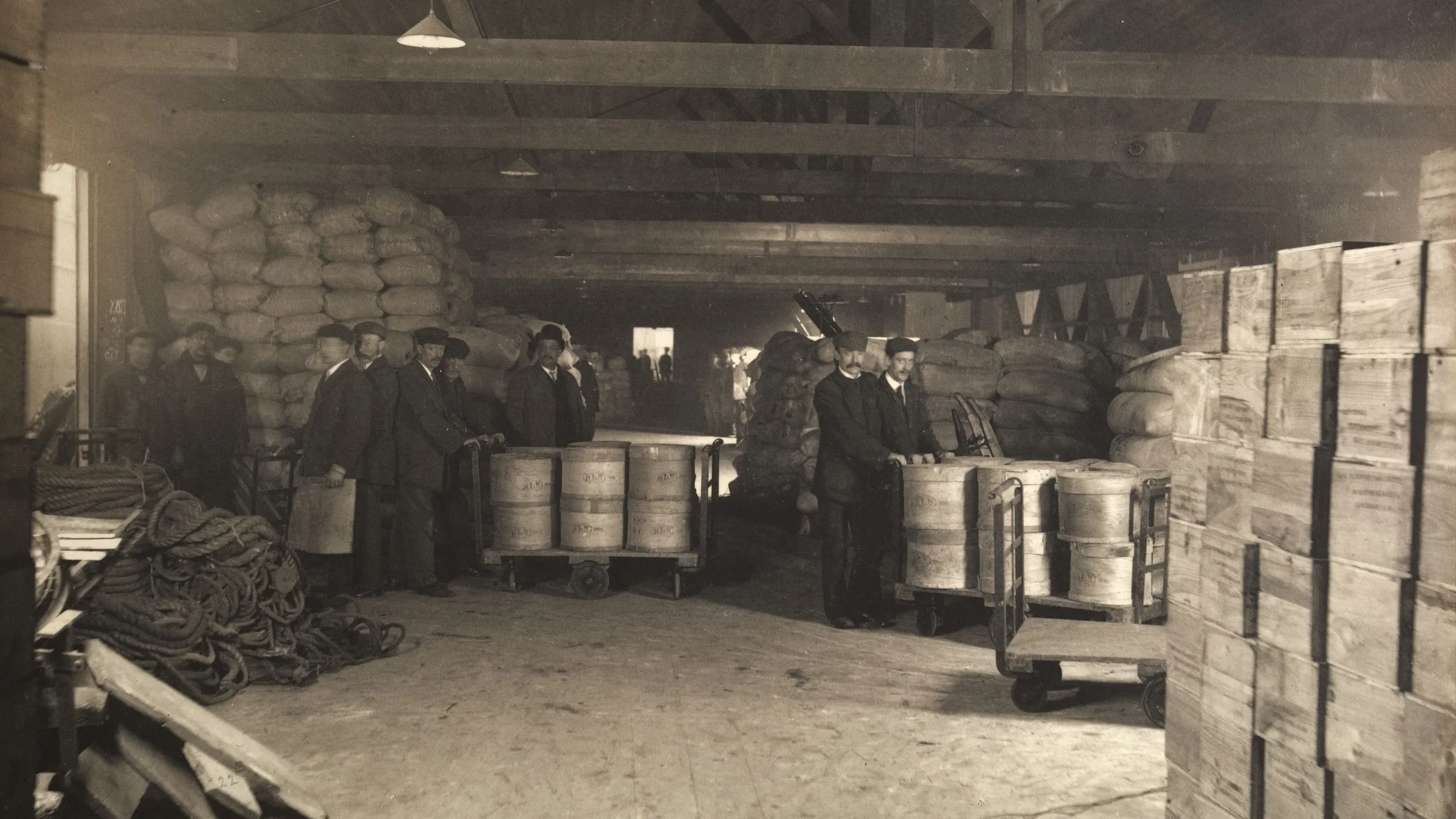
Inside the warehouse
Warehousemen were responsible for piling, checking and sampling goods in the warehouses that lined the docks and filled the surrounding area. Before forklift trucks were introduced, goods were manually winched to upper floors and moved on hand carts. This photo shows cheese being stored in 1906.
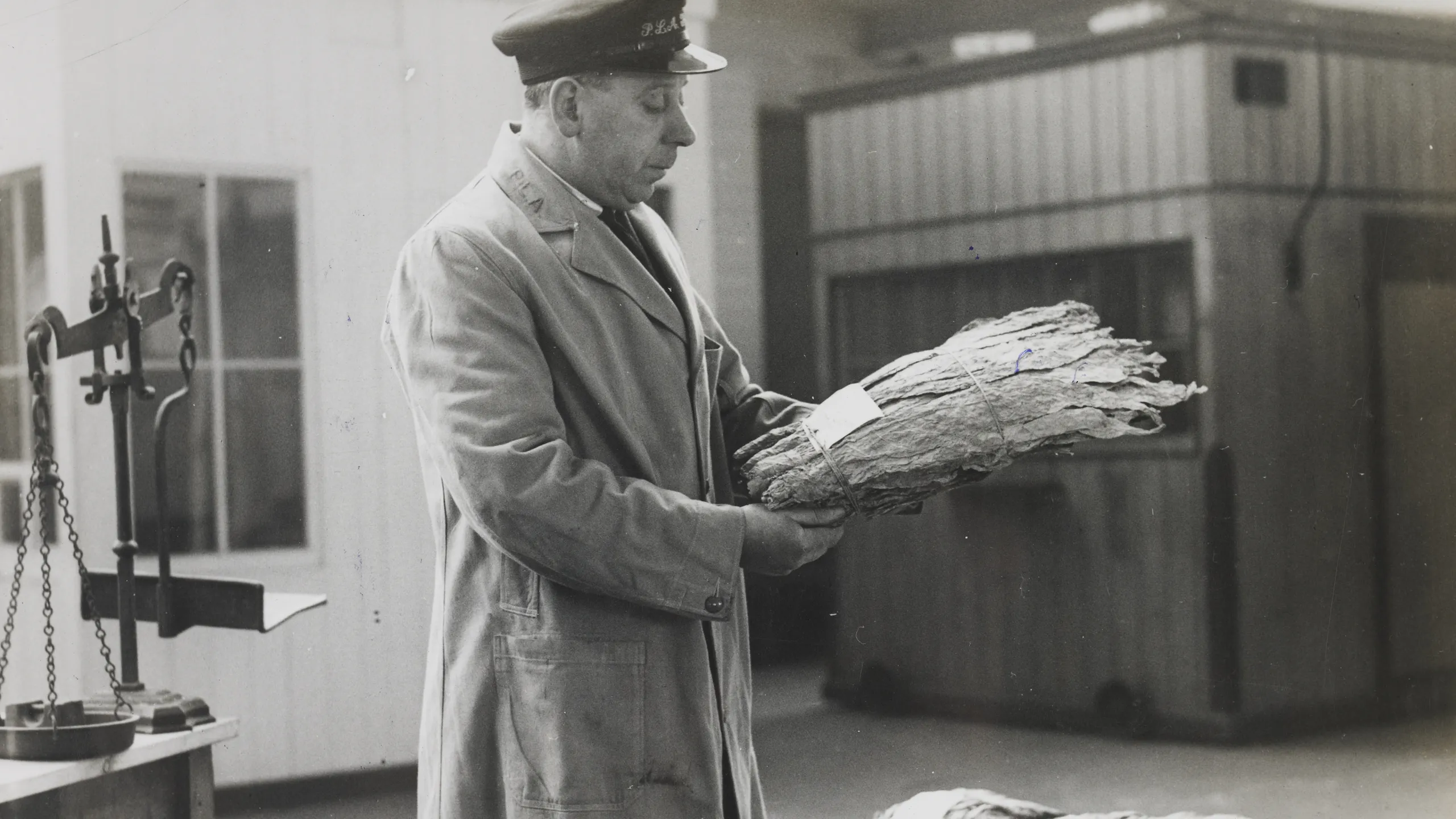
Customs and excise
A customs official inspects a sample of tobacco in the 1930s. Among other things, customs officials calculated the import or export duties to be paid on the goods handled at the docks. At Tobacco Dock, a furnace known as the ‘Queen’s Pipe’ was used to burn items when the correct tax hadn’t been paid.
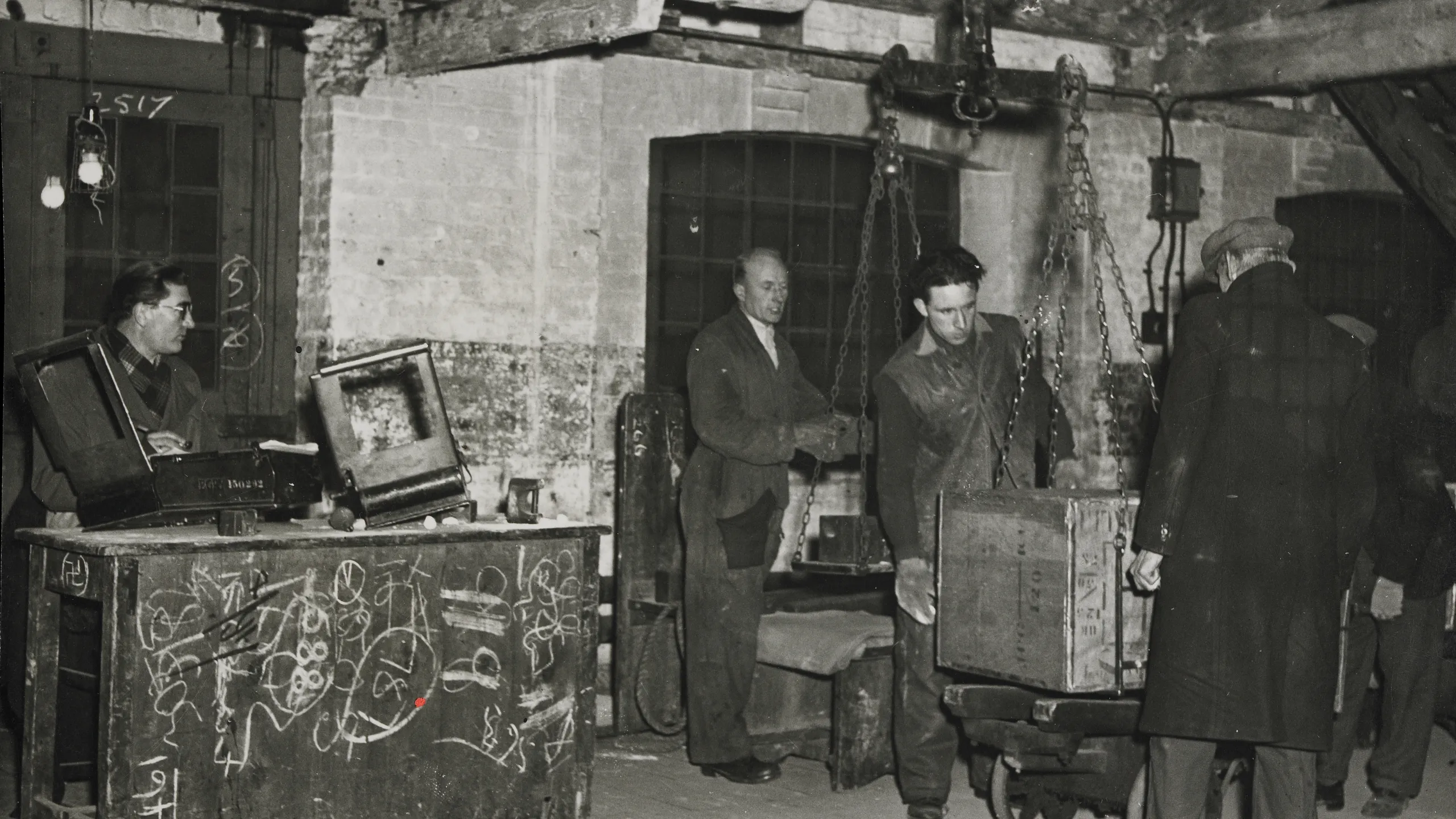
Checking, counting, weighing
In this photo from 1951, the tally clerk seated on the left is recording the weight of the crate of tea suspended on the right. Measuring and weighing goods at the docks allowed merchants and the dock companies to know exactly what was arriving and leaving.

Working on the dock
These dockers stopped to pose for the camera in 1929 while unloading meat from a ship at the Royal Victoria Dock. As well as skilled trades, the docks relied on general labourers who carted goods between the wharves and warehouses. The majority of dockers worked casually, heading to the docks every day to see what work was available. Often, there was nothing for them.

The call on
Ships arrived at London’s docks at irregular intervals, making the work irregular too. In the 1860s, the number of dockers employed at the city’s St Katharine, London, West India and East India Docks fluctuated between 2,500 and 9,000 men. Crowds of men gathered ‘on the stones’ at the entrance to the docks for the ‘call on’, jostling to be picked for work. Sometimes, the contest turned violent. The ‘call on’ continued into the middle of the 20th century.

Striking gold
Dockers pose as they unload gold ingots from a ship in 1930. Much of the cargo handled by dockers was less appealing. Chemicals irritated. Lampblack stained skin for days. Animal products stank. And tropical goods sometimes carried insects that bit.

River pilots and dock pilots
Navigating a ship along the Thames and into the docks was no easy task. Specialist river pilots brought ships upriver, then handed over to a dock pilot to complete the last leg of the journey. That final transfer is what’s happening here.

Work below the water
Photographed in 1930 at Surrey Commercial Docks, this diver was tasked with making underwater repairs.

Deal porters
These deal porters are taking a well-deserved break at Surrey Commercial Docks in the 1930s. Deal porters moved timber planks, skilfully stacking them in piles which were many metres tall. Their special leather headwear protected their necks from the heavy loads.

Lightermen and watermen
Lightermen piloted small boats that took goods from ships to the shore. The new 19th-century dock complexes – where goods were unloaded directly onto the dockside – reduced the need for lightermen. But lightermen still ferried goods to cheaper warehousing away from the main docks. Watermen did a similar but different job ferrying people around the docks.

Policing the docks
This police officer is checking a horse-drawn cart for stolen goods as it leaves the docks. Security was a priority for the dock companies from when the first dock complexes were built in the 19th century. The docks had their own police force even before the Metropolitan Police was created in 1829.




